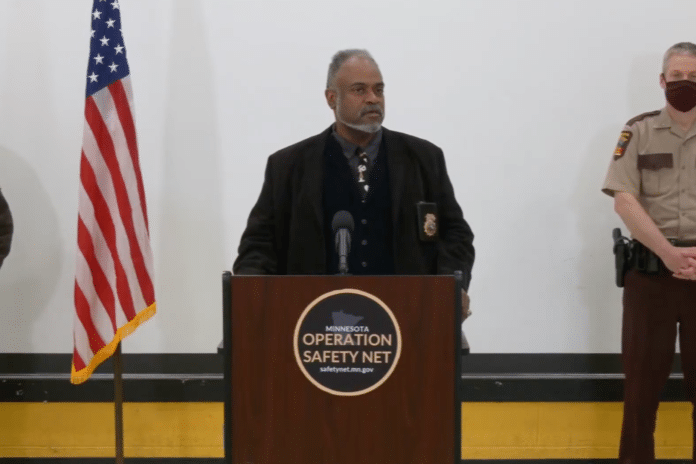
Minnesota’s “Operation Safety Net” (OSN), an anti-crime initiative rolled out for the trial of Derek Chauvin, apparently deployed a wide range of spying tactics against protesters and members of the media.
These allegations come via an MIT report that details the use of drones, advanced facial recognition technology, location data lifted from protesters’ phones and the aid of federal agencies to monitor protesters and reporters during OSN. Information gathered using these controversial tactics was then fed into several data-tracking programs that enabled different law enforcement agencies to monitor the movements of the same tracked individuals in real time.
Among the most polarizing services leveraged against citizens under OSN is Clearview AI, a company that has lifted over 10 billion photos from social media to create what they proudly call “the world’s largest facial network.” This database is available to law enforcement, at a price, so agents can quickly learn the names of people surveyed via their drones, camera hubs or by other means.
This technology has drawn fire from watchdogs and been legally restricted by some governments like Australia but is still widely employed by the NYPD and is apparently available to law enforcement in Minneapolis.
OSN also employed the use of the Homeland Security Information Network (HSIN), another service that offers facial recognition capabilities. Although this service was available at the OSN control center, dubbed the “fusion center,” the director of communications at the Minnesota Department of Public Safety told MIT Technology Review that the department “does not own or use facial recognition technology.”
Former Hennepin County Sheriff Rich Stanek, a law enforcement expert and Republican gubernatorial candidate, described OSN as “a warrantless secret spying effort authorized by Minnesota Gov. Tim Walz” after the MIT report was published. He lamented the operation’s tactics and blasted the Walz administration for “keeping it hidden from the public.”
“Law enforcement has the right to take photographs at protests when they are in public places; however, they do not have the right to assemble Minnesotans’ personal data in a real-time database, and track individuals’ actions who are not suspected of committing a crime — without a warrant,” Stanek claimed. “They are not tracking suspected criminals, which would have been entirely different. They have been surveilling everyday Minnesotans based on their views and opinions; they are tracking our free press.”
Stanek is unambiguous in his conclusion: OSN “violated the constitutional rights of Minnesotans.”
The extent of the data gathering under OSN remains unclear, as does the continued scope of the program. While it has supposedly been shuttered, a second MIT report released last week accuses Minnesota officials of continuing to spy after the operation had supposedly ended.
However, what little information has been made available shows that the multiple local, state and federal law enforcement agencies involved in the operation seemed to compile dossiers on targeted individuals. One such individual is local reporter J.D. Duggan, who was able to make a public information request to uncover three pages of information that detailed his movements during a night of unrest.
Operation Safety Net has not posted a press conference to its YouTube or updated any of its social media in about a year. The website about it linked on the Minneapolis city website is “no longer available.”
It’s unclear who exactly was in charge of OSN but it was described as “a joint effort between the city of Minneapolis, Hennepin County, and the state of Minnesota,” among other jurisdictions. Both the Minnesota National Guard and Minnesota State Patrol were involved, and Walz’s commissioner of public safety, John Harrington, regularly appeared at press conferences.
At one point, Rep. Ilhan Omar criticized Walz and Minneapolis Mayor Jacob Frey for placing Minnesotans “under military occupation.”
In another case, a group of Minneapolis legislators wrote to Walz and asked him to “re-evaluate” the tactics of OSN. A coalition of community groups issued a similar letter.
Alpha News reached out to Walz’s office for comment but did not receive a response.
















